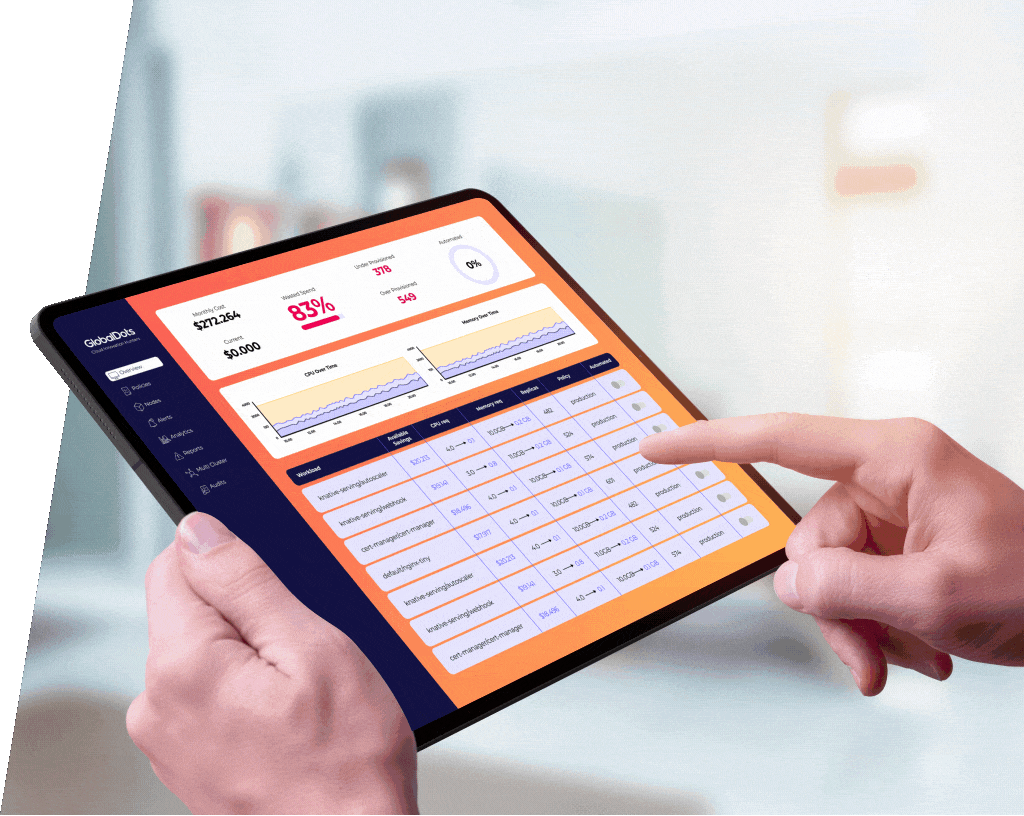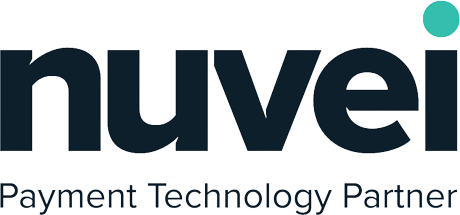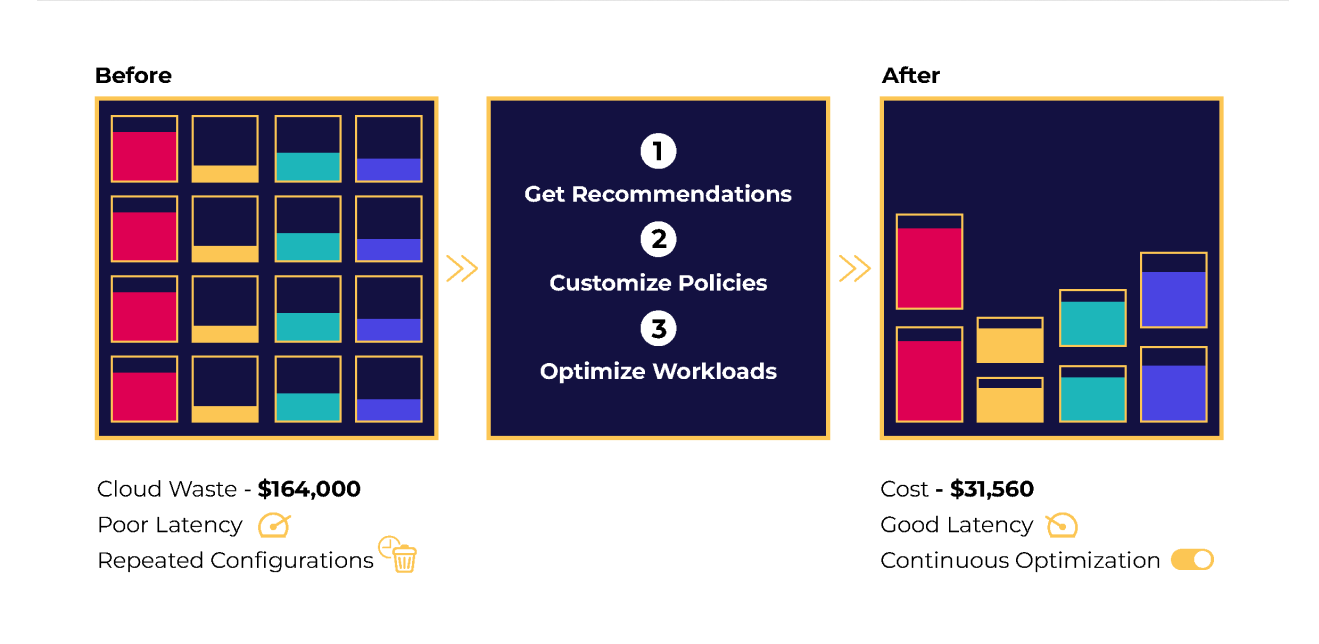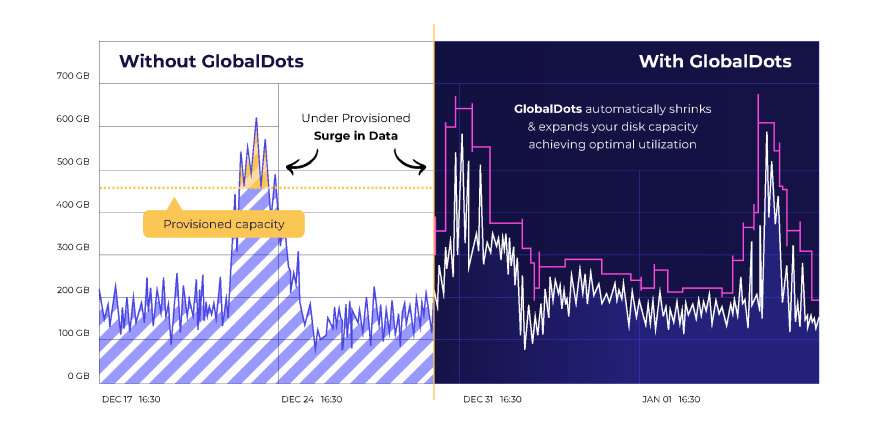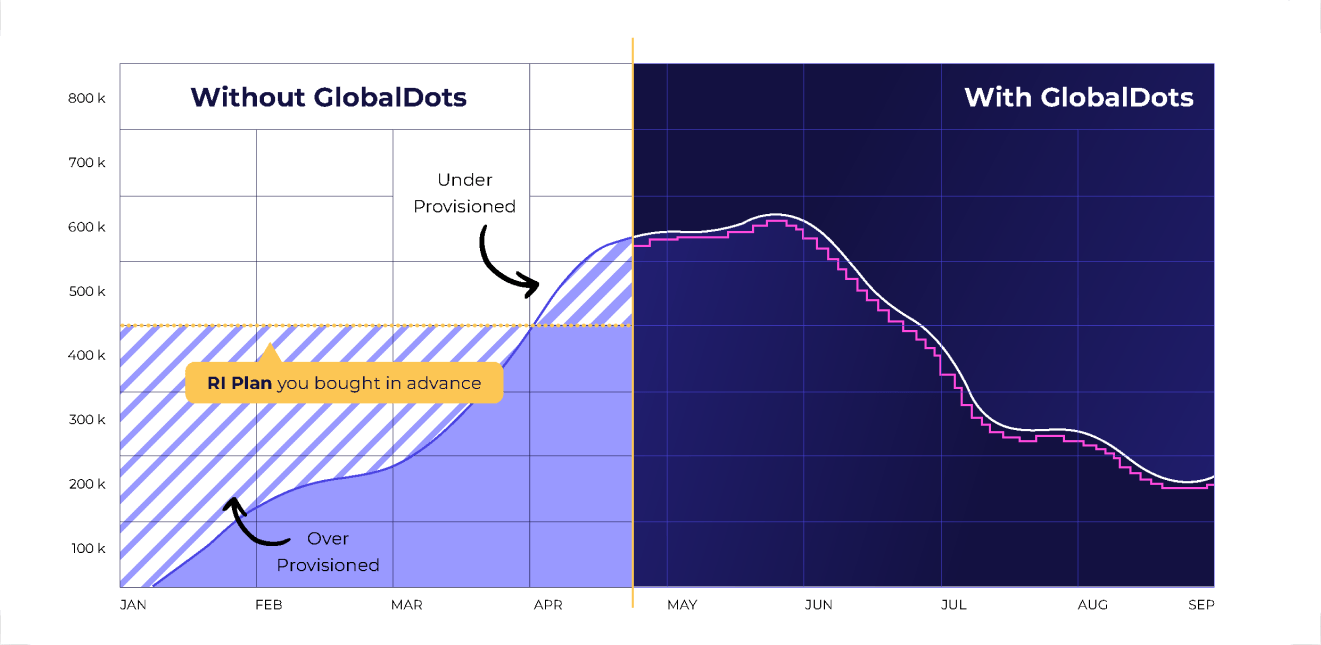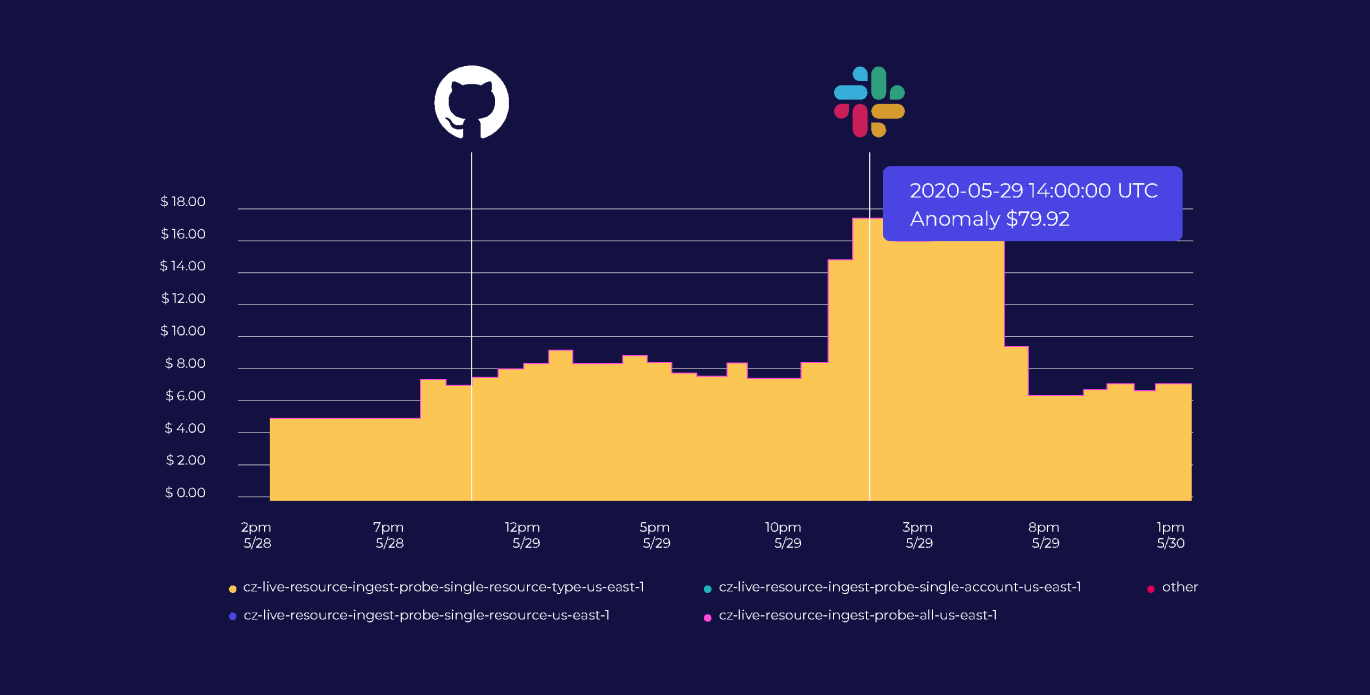Cloud Cost Optimization Solutions
Modernize your FinOps strategy with our experts: Uncover cloud savings, implement automations, and adopt field-tested solutions.
Get your savings roadmap in 20-minute call

-
Commitment Automation
Free your engineers and Let AI & ML manage your commitments
-
Optimized Infrastructure
Automate resource rightsizing to match your business usage patterns
-
Put Context into Cloud Bills
Gain valuable insights into spending patterns with Cost Observability tools
-
Tailor made FinOps strategy
Harness GlobalDots' expertise to build a tailored FinOps foundation
-
Up to 75% Cost reduction on Kubernetes clusters -
Up to 70% Reduction in storage costs -
Up to 60% Savings with RIs & SPs discounts management -
Up to 45% Save on your cloud workload
FAQs
-
What is FinOps in cloud services?
FinOps, short for Financial Operations, is a methodology focused on optimizing cloud costs within organizations. It involves practices such as monitoring spending, assigning accountability, and implementing optimization strategies to ensure efficient resource usage in cloud environments.
FinOps assists in strategic decision-making by providing insights into cloud spending patterns and cost implications, enabling organizations to make informed choices that align with their overall business objectives.
-
How to implement FinOps?
Implementing FinOps effectively involves establishing best practices for cost monitoring, optimization, and accountability within the organization, drawing from shared knowledge and experiences of FinOps practitioners. Utilizing automation tools for cost analysis, resource allocation, and policy enforcement streamlines FinOps processes and ensures consistency and efficiency. Additionally, leveraging professional services or consulting expertise can provide guidance and support in implementing FinOps frameworks tailored to the organization’s specific needs and goals.
-
What are the 3 FinOps phases?
The three phases of FinOps are typically categorized as Inform, Optimize, and Operate:
Inform: In this phase, the focus is on gaining visibility into cloud spending and usage patterns. This involves setting up monitoring tools, establishing tagging strategies, and generating reports to understand where and how cloud resources are being utilized.
Optimize: Once visibility is established, the next phase involves optimizing cloud resources to reduce costs while maintaining performance. This includes rightsizing instances, leveraging reserved instances or savings plans, implementing auto-scaling, and identifying opportunities for cost reduction.
Operate: The final phase is about operating efficiently within the established FinOps framework. This includes continuously monitoring and managing costs, enforcing policies and governance measures, educating teams about cost optimization practices, and iterating on the process to adapt to changing business needs and cloud environments.
-
What is the difference between CloudOps and FinOps?
CloudOps focuses on managing and optimizing the technical operations of cloud infrastructure and applications, while FinOps specifically targets the financial aspects of cloud usage and spending, aiming to optimize costs and align them with business goals.
-
Why FinOps?
FinOps enables organizations to effectively manage and optimize their cloud spending, aligning it with business objectives, maximizing return on investment, and providing insights into cost allocation across various teams and projects.
Simplify K8s Complexities
Streamline your cluster strategy with expert insights and proven Kubernetes strategies, all inside our free guide.
